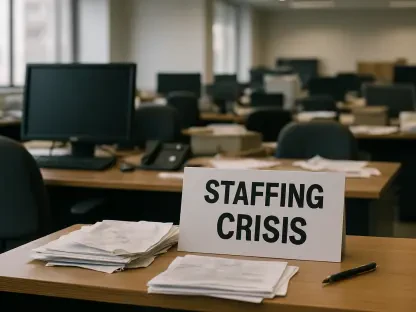In a groundbreaking shift, Australia is reevaluating what constitutes a workplace injury, expanding the definition to encompass not just physical harm but also mental health challenges faced by employees, marking a significant departure from traditional views. For decades, workplace safety laws have focused predominantly on preventing physical injuries, ensuring employers provide compensation and implement preventive measures for accidents like falls or equipment-related incidents. However, the growing recognition of psychological well-being as a critical component of employee health has prompted a significant policy change. States such as New South Wales, Queensland, and the Australian Capital Territory have adopted new codes of practice that address psychosocial risks. This marks a pivotal moment in acknowledging that stress, burnout, and toxic workplace behaviors are not merely personal struggles but legitimate occupational hazards that employers must actively manage and mitigate to protect their workforce.
1. A New Era of Workplace Safety Laws
The landscape of workplace safety in Australia is undergoing a transformative update with the integration of mental health into existing health and safety frameworks. Under the Work Health and Safety (WHS) Act, particularly in New South Wales, mental health has always been part of the broader definition of health. Yet, the recent introduction of the Psychosocial Hazards Code of Practice elevates the importance of psychological risks to the same level as physical ones. This code does not create new legislation but clarifies how current obligations extend to mental well-being. Once formally approved by a jurisdiction, as seen in New South Wales, it imposes a legal duty on employers to address foreseeable psychological harm. This means that businesses must proactively identify and manage factors contributing to mental strain, ensuring that employees are safeguarded from issues beyond overt bullying, such as excessive workloads or poor organizational structures that impact mental health over time.
This shift in policy reflects a broader understanding of the workplace as a holistic environment where mental and physical health are intertwined. Employers, referred to as Persons Conducting a Business or Undertaking (PCBUs) under WHS laws, are now required to apply the same rigorous standards to psychosocial risks as they do to physical dangers. The legal test of eliminating or minimizing risks “so far as is reasonably practicable” now explicitly includes mental health considerations. In practical terms, this compels businesses to reassess everyday workplace conditions that might erode psychological well-being, from unclear job roles to high-pressure deadlines. Failure to comply with these standards can result in accountability measures, emphasizing the seriousness with which mental health is now treated. This progressive approach aims to foster safer, more supportive work environments where employees are protected from both visible and invisible harms that can affect their overall quality of life.
2. Understanding Psychosocial Hazards
Psychosocial hazards, as outlined in the New South Wales Code of Practice, refer to elements of work or workplace situations that trigger a stress response severe enough to cause psychological or physical harm. These hazards are categorized into four key areas: the design and management of work, including workload and leadership styles; roles with inherent risks, such as those in emergency services or healthcare; the physical work environment that may heighten stress; and social dynamics, like conflict or poor communication. The cumulative effect of multiple hazards often poses the greatest threat, such as when high workloads are paired with inadequate support or unclear expectations. This comprehensive definition underscores that mental health risks are not isolated incidents but often systemic issues embedded in how workplaces operate and interact with their employees on a daily basis.
Specific examples of psychosocial hazards highlight the diverse ways mental health can be impacted at work. Role overload, characterized by chronic high workloads or unpredictable hours, can lead to burnout, while role underload, involving monotonous tasks, may cause disengagement and stress. Exposure to traumatic events is a significant concern for professions like emergency response or legal roles dealing with distressing content. Additionally, inadequate recognition of effort or unfair processes around performance and scheduling can erode morale and mental stability. These examples illustrate that psychosocial hazards are not limited to overt conflicts but include subtle, pervasive conditions that accumulate over time. By identifying these risks, the Code of Practice provides a framework for workplaces to address issues that were previously overlooked, ensuring a more inclusive approach to employee safety that prioritizes mental well-being alongside physical health.
3. Managing Mental Health Risks in the Workplace
Addressing psychosocial hazards requires a structured, proactive approach similar to managing physical risks, as detailed in the Code of Practice. The process begins with identifying potential sources of psychological harm through methods like employee consultations, reviewing incident reports, and observing patterns of stress or burnout within the organization. This initial step is crucial for uncovering hidden issues that might not surface through casual observation, such as unspoken pressures or systemic inefficiencies. Once identified, employers must assess the frequency, severity, and overlap of these hazards to understand their full impact. This assessment helps prioritize interventions, ensuring that the most pressing risks are tackled first. By embedding this systematic identification and evaluation into workplace practices, businesses can create a culture of awareness and responsiveness to mental health challenges.
The next steps involve controlling and reviewing the identified risks to ensure long-term effectiveness. Control measures might include adjusting workloads to prevent overload, enhancing communication channels for clearer expectations, or providing better training for supervisors to support their teams. These practical solutions aim to mitigate stress at its source, fostering a healthier work environment. Additionally, workplaces must regularly review these measures to adapt to changing conditions, ensuring that interventions remain relevant and effective. This continuous cycle of assessment and adjustment reflects a commitment to sustained mental health protection. Reflecting on how these strategies were implemented, it became evident that proactive steps taken by employers in the past significantly reduced instances of burnout and stress-related absences, paving the way for more resilient workplaces across various industries in Australia.
4. Shaping a Healthier Future for Workers
Looking back, the adoption of psychosocial hazard codes marked a turning point in how workplace injuries were perceived and managed across Australia. States that embraced these guidelines witnessed a cultural shift, where mental health gained equal footing with physical safety in corporate policies. This change was not merely legislative but deeply societal, as it validated the experiences of countless workers who had long grappled with invisible burdens. The structured approaches to identifying, assessing, controlling, and reviewing risks became integral to organizational frameworks, ensuring that mental well-being was no longer an afterthought but a core priority in workplace safety protocols.
Moving forward, the focus should be on expanding these initiatives to all regions and industries, ensuring uniform protection for every employee. Businesses are encouraged to invest in training programs that equip managers to recognize and address psychosocial risks effectively. Collaboration between policymakers, employers, and workers can further refine these codes, adapting them to emerging challenges. By building on the foundation laid in previous efforts, Australia can continue to lead in creating workplaces where mental health is safeguarded with the same diligence as physical safety, setting a global standard for holistic employee care.









